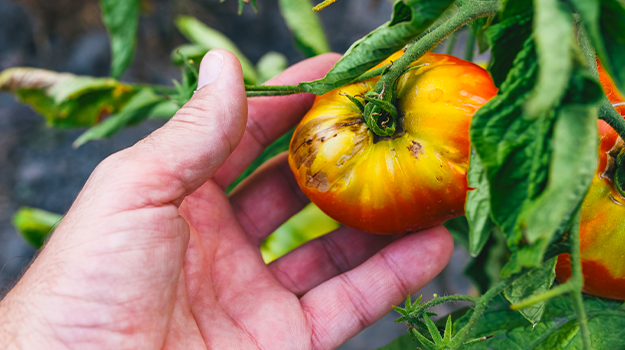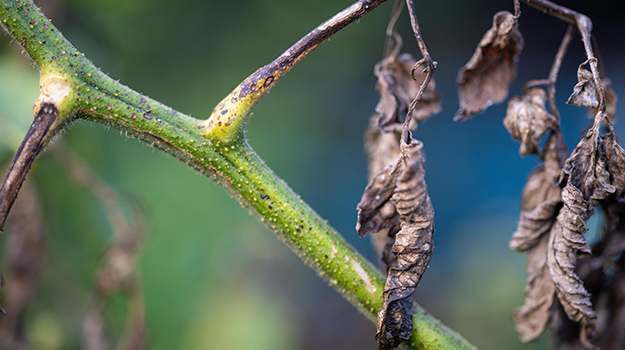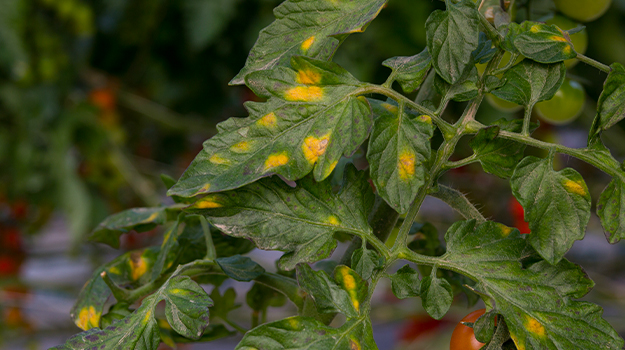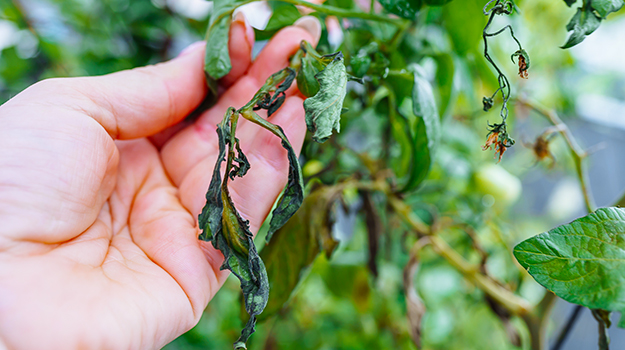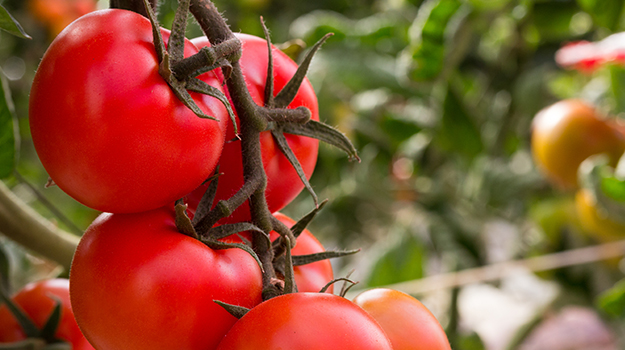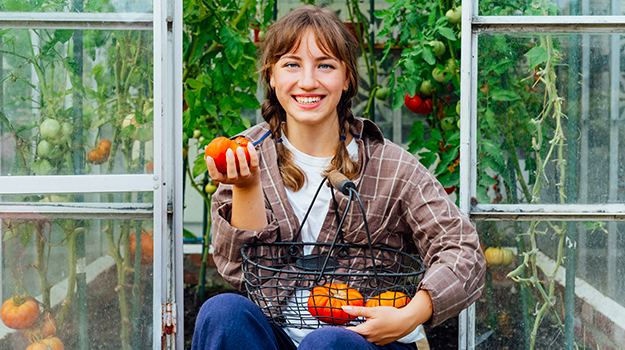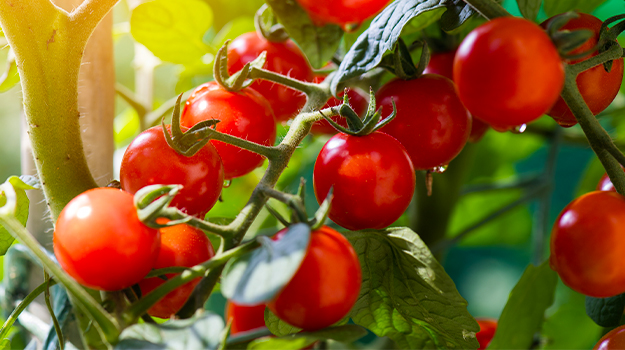- What are the most common diseases in tomatoes?
- How to prevent disease in tomatoes?
- What are the main diseases that affect tomatoes?
- When to treat tomato plants?
- How to prevent disease in tomatoes?
- Can I eat diseased tomatoes?
- Which tomatoes are the most resistant to disease?
No matter how much you care for your garden, it's impossible to control everything. Sometimes the weather isn't favourable. Some varieties are also more sensitive, or your plants are less resistant to attacks. The soil may also be inadequate, or the watering technique, etc.
In short, there can be many causes. We'll show you how to identify different tomato diseases and how to prevent them.
What are the most common diseases in tomatoes?
Some tomato diseases are related to the presence of fungal organisms, while others are bacterial or viral. As mentioned, they can depend on various factors such as the wind, temperature, humidity, the resistance of the tomato variety or cultivar grown, or even the growing method.
Fungal diseases (late blight, dry rot, verticillium wilt, grey mold) are most often caused by poor growing practices, such as close planting that prevents the sun and air from circulating between the plants or watering that wets the foliage on a daily basis.
The weather conditions can also play a role. Cool, damp nights early in the season can later lead to the appearance of brown leaves and diseases that will sooner or later migrate to the fruits.
If you don't treat promptly with a fungicide or bactericide, you can say goodbye to your harvest. The sooner you detect disease in a plant, the sooner you can contain it and stop the damage.
How to prevent disease in tomatoes?
We have no control over the amount of rain that can fall in one summer, but we can still protect our tomatoes from certain diseases by adopting good gardening habits. Because yes, the problem may come from growing conditions (watering, planting, soil quality, etc.).
It's recommended not to plant tomatoes in the same spot two years in a row, especially if your tomatoes suffered from disease the previous year. It's also important to ensure the soil you're growing in is healthy and fertile. At the end of the season and throughout the summer, be sure to remove debris to keep the soil free of wilted leaves and spoiled fruits. This will help limit the presence of fungal spores in the soil.
When preparing your vegetable garden, avoid digging deeply to avoid disturbing the microorganisms present in the soil. Add compost to the top layer of soil, or use our Organic Vegetable and Herb Mix, which contains mycorrhizae for a stronger root system and more resilient plants.
The planting distance can also be a factor. When plants are planted too closely together, the air and sunlight don’t circulate as well between the plants. This proximity facilitates the transmission of diseases from one plant to another. Respecting planting distances can prevent many garden problems!
What are the main diseases that affect tomatoes?
The most common tomato diseases are also found on other crops. Here is a list.
(Click the links to learn how to identify, treat and prevent each disease.)
- Late blight
- Powdery mildew
- Botrytis or grey mold
- Chlorosis
- Blossom-end rot
- Early blight
- Anthracnose
- Tobacco mosaic
- Dry rot
- Bacterial wilt
- Leaf spot
- Verticillium wilt
- Tomato spotted wilt
Most diseases show characteristic signs, which are listed below. However, note that some symptoms are similar. This guide is not exhaustive, and since understanding the disease is essential for proper treatment, we suggest you also consult our other articles or consult an advisor at your favourite garden centre before making a diagnosis.
- Botrytis (grey mold): The tomato plant softens, black spots appear, the flowers and fruits become covered with a grey or brownish mold.
- Dry rot: The lower stems soften and the leaves turn yellow.
- Bacterial wilt: The young leaves wilt.
- Late blight: Appearance of yellow spots and grey then brown lesions on the stems, leaves and fruits.
- Powdery mildew: Appearance of white, powdery mold on the plant.
When to treat tomato plants?
Treat as soon as the first signs are noticed to prevent the disease from spreading or worsening. It's best to treat early in the morning, when it's cooler, so it’s less stressful for your plants. Both the treatment and the heat cause stress.
Some gardeners will treat preventatively, early in the growing season, before symptoms appear. Others will treat at regular intervals throughout the season.
No matter your problem, opt for organic control methods for your tomatoes. Many fungicides are harmful to the environment and beneficial insects in the soil. Use them only when the disease can be controlled (some cannot!) and always follow the manufacturer's recommendations.
How to prevent disease in tomatoes?
If your tomatoes were diseased last year, here are some tips to make sure it doesn’t happen again.
- Choose tomato varieties that are less sensitive to disease.
- Rotate crops: when possible, avoid planting the same species in the same spot two years in a row.
- Ensure that the recommendations given above are respected, depending on the problem.
GOOD TO KNOW
Most hybrid tomatoes have been bred for their resistance to certain diseases and may therefore be less sensitive, but this isn't always true. Some heirloom varieties are still among the favourites, even though they've been around for a long time, and this, for the same reasons!
Can I eat diseased tomatoes?
It is not recommended to eat diseased tomatoes. Not only do they taste unpleasant, but they can also pose a health risk. Those affected by late blight, for example, carry potentially toxic fungal spores.
And when it comes to healthy tomatoes, it's recommended to wash them before eating them. This helps eliminate all traces of contaminants. Invisible to the eye, they can potentially be found in any environment, no matter where you live.
Which tomatoes are the most resistant to disease?
Tomatoes identified by small codes are generally good choices. The letters indicate their resistance to certain common diseases. This way, if your plant becomes sick, it will be less severely affected.
V: resistant to verticillium wilt
F: resistant to dry rot race 1
FF: resistant to dry rot races 1 and 2
FFF: resistant to dry rot races 1, 2 and 3
A: resistant to early blight
N: resistant to nematodes
Ph, PHR or LB: resistant to late blight
St: resistant to stemphylium
T or TMV: resistant to tobacco mosaic
Thus, the tomato labelled Big Beef VFFNTA indicates that this plant is resistant to the following diseases: verticillium wilt, dry rot races 1 and 2, nematodes, tobacco mosaic and early blight.
Disease-resistant tomatoes
- Fantasio F1
- Crimean Black
- Roma (robust for an Italian tomato!)
- Legend
- Celebrity
- Jaune Flammée
- Handy Lady
- Tigerella
- Cherry tomatoes are also good options. Most are more disease-resistant than larger tomatoes.
The tomato varieties resistant to late blight
- Honey Moon F1
- Pyros
- Tigerella
- Rubylicious F1
- Oaxacan Jewel
- Legend
- Paoline F1

